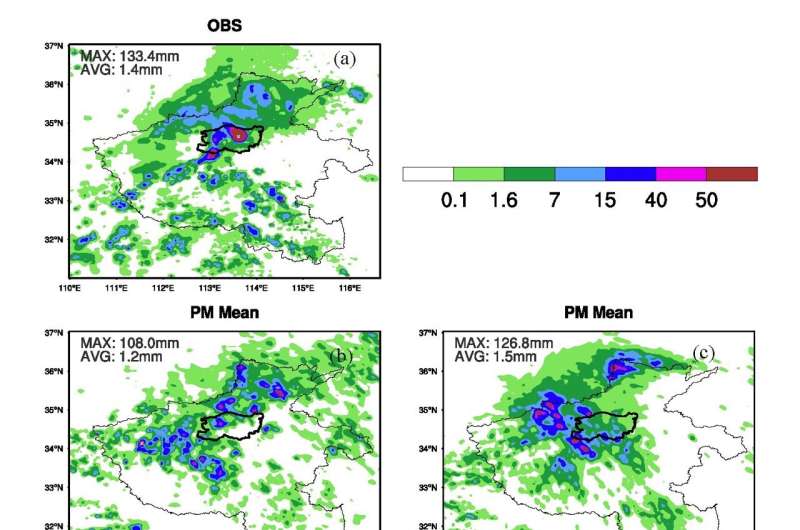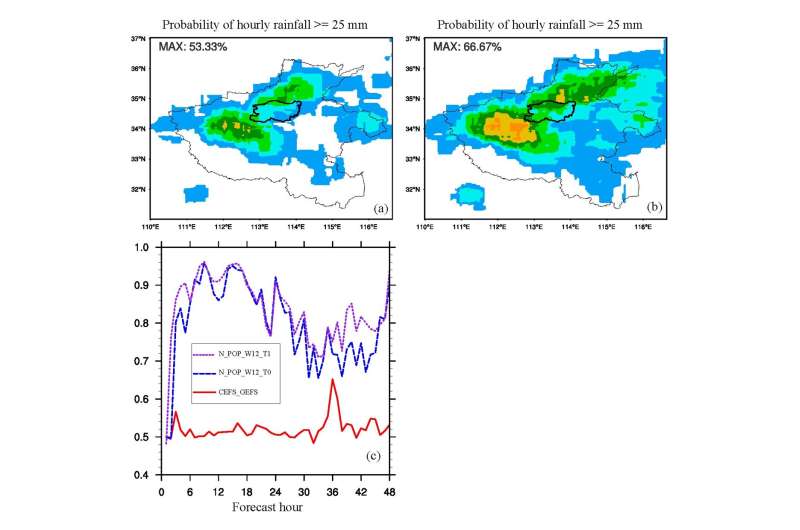Examining rainfall prediction accuracy regarding extreme rainfall events in Henan province, China

This study is led by Kefeng Zhu (Nanjing Joint Institute for Atmospheric Sciences) and Prof. Ming Xue (Key Laboratory for Mesoscale Severe Weather and School of Atmospheric Science, Nanjing University and Center for Analysis and Prediction of Storms and School of Meteorology University of Oklahoma).
The predictability of the Henan "21•7" extreme rainfall event was investigated using a convection-permitting ensemble forecast system. The team found that the predictability of such extreme rainfall events at the accuracy of city scale is very low. A neighborhood probability of precipitation is therefore proposed which greatly improves the skill of probability forecast.
Two groups of CEFSs are conducted by the research team. Both CEFSs are able to reproduce the daily heavy rainfall along the Taihang Mountains, but most members have significant position biases for the extreme rainfall in Zhengzhou. All ensemble members underestimate the extreme hourly rainfall (201.9 mm h-1) and have position errors of a few tens to a few hundreds of kilometers.
The predictability of the extreme hourly rainfall at the accuracy of city scale in Zhengzhou is very low. This is because the occurrence of the extreme requires that many favorable conditions to happen simultaneously. Most of CEFSs members cannot accurately predict the position of convergence line between mesoscale vortex and barrier jet induced by the blocking of airflow by orography.

One of the main reasons for the low probability of this extreme rainfall event is the position biases. Therefore, the research team proposed a new neighborhood probability of precipitation (POP). Compared with the traditional POP, the new neighborhood POP method significantly improves the forecast skill score, for both daily and hourly rainfall, suggesting higher predictability when spatial error among the ensemble members is allowed.
The research is published in Science China Earth Sciences.
More information: Kefeng Zhu et al, Predictability and skill of convection-permitting ensemble forecast systems in predicting the record-breaking "21·7" extreme rainfall event in Henan Province, China, Science China Earth Sciences (2022). DOI: 10.1007/s11430-022-9961-7
Journal information: Science China Earth Sciences
Provided by Science China Press





















